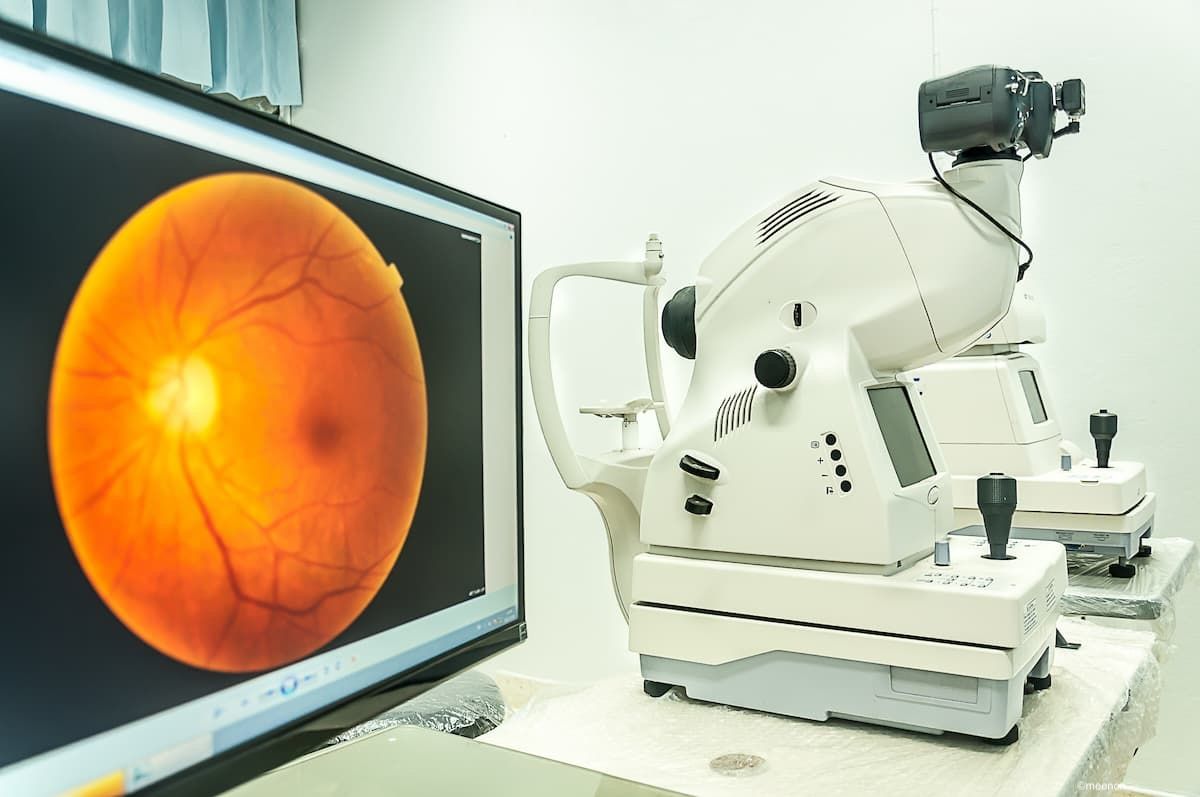Publication
Article
Digital Edition
Microglial activation in AMD: Hyperreflective retinal foci offer insights for disease progression and monitoring
Author(s):
Key Takeaways
- HRF on OCT images indicate activated microglial cells, linked to AMD pathogenesis and local neuroretinal inflammation.
- Study examined HRF in patients with bilateral GA, unilateral GA with MNV, and EMAP, revealing significant group differences.
A study suggests that small hyperreflective retinal foci (HRF) on OCT images, linked to activated microglial cells, could serve as a valuable marker for monitoring neuroretinal inflammation and progression in age-related macular degeneration.
(Image Credit: AdobeStock/meenon)

Small hyperreflective retinal foci (HRF), identified on optical coherence tomography (OCT) images, reflect activated neuroretinal microglial cells involved in the pathogenesis of age-related macular degeneration (AMD). According to Elisabetta Pilotto, MD, FEBO, and colleagues, HRF with specific characteristics, known as aggregates of activated microglial cells, may indicate local neuroretinal inflammation that can be monitored using OCT. Pilotto is an assistant clinical professor of ophthalmology in the Department of Neuroscience at the University of Padova, Italy.
In a study, investigators retrospectively reviewed the presence and amount of small HRF in the eyes of patients with different macular atrophic phenotypes. This included bilateral geographic atrophy (GA); unilateral GA and macular new vessels (MNV) in the fellow eye; and extensive macular atrophy with pseudodrusen (EMAP), a rare and aggressive variant of atrophic AMD.1
The investigators defined HRF as “isolated punctiform elements of small dimensions, 30 μm or smaller, with intermediate reflectivity (similar to that of the nerve fiber layer) and without a shadow cone.” The foci were measured on near-infrared reflectance (NIR) and blue wavelength fundus autofluorescence (FAF) images. The HRF were manually identified, counted, and analyzed to identify correlations with the best-corrected visual acuity (BCVA), GA lesion size, some GA features (multifocal vs unifocal GA; presence vs absence of foveal sparing), and central retinal thickness (CRT), according to the investigators.
Correlations identified
A total of 46 patients were included and classified: 26 with bilateral GA, 16 with unilateral GA and MNV in the fellow eyes, and 4 with EMAP. The patients with EMAP were younger than patients with bilateral and unilateral GA: 63.5 ± 6.8 years vs 80.4 ± 8.4 years (P = .0004) and 83.3 ± 6.1 years (P <0001), respectively.
The evaluated factors that did not differ significantly among the groups were the mean BCVA; mean GA area in the NIR and FAF images; foveal sparing and multifocal vs unifocal GA distribution; and the mean CRT. In all groups, the GA areas were wider on the NIR images than the FAF images, and significantly so in the bilateral and unilateral GA groups: 11.7 ± 7.6 mm2 vs 10.6 ± 7.1 mm2 (P = .0087) and 7.8 ± 9.2 mm2 vs 7.7 ± 9.4 mm2 (P = .004), respectively.
Significantly more HRF were present in the unilateral GA group than in the bilateral and EMAP groups: 47.4 ± 7.1 vs 31.6 ± 7.3 and 28.0 ± 4.9, respectively (P < .0001 for both comparisons). The bilateral GA and EMAP groups had similar numbers of HRF (P = .1960).
A correlation was found only between the numbers of HRF and the CRT (ie, a positive correlation with the bilateral GA group and a negative correlation with the unilateral GA group). “The increase in the small HRF, which mirrors retinal microglial activation, characterizes eyes with unilateral GA and MNV in the fellow eye but not eyes with bilateral GA or EMAP,” the investigators noted. They added that the role of activated microglial cells in the retina of eyes with GA should be investigated further with consideration of “actual and new therapeutic strategies with which to reduce either the development or progression of the atrophic macular changes.”
Reference:
Pilotto E, Parolini F, Midena G, Cosmo E, Midena E. Small hyperreflective retinal foci as in vivo imaging feature of resident microglia activation in geographic atrophy. Exp Eye Res. Published online September 4, 2024. doi:10.1016/j.exer.2024.110064





